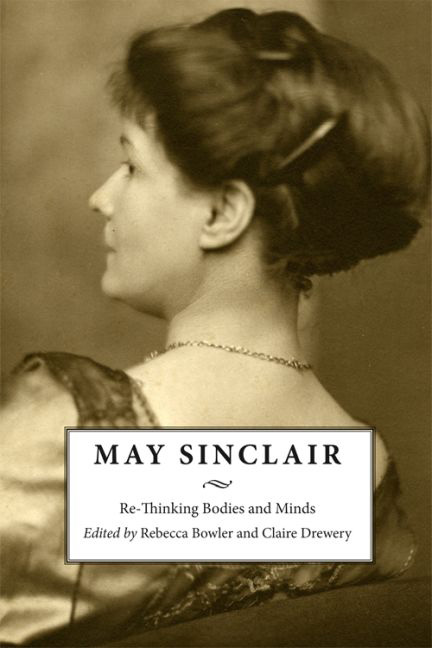Book contents
- Frontmatter
- Contents
- Acknowledgements
- Introduction: May Sinclair's Interdisciplinarity
- Part I The Abstract Intellect
- 1 ‘Dying to Live’: Remembering and Forgetting May Sinclair
- 2 Learning Greek: The Woman Artist as Autodidact in May Sinclair's Mary Olivier: A Life
- 3 Portrait of the Female Character as a Psychoanalytical Case: The Ambiguous Influence of Freud on May Sinclair's Novels
- 4 Feminism, Freedom and the Hierarchy of Happiness in the Psychological Novels of May Sinclair
- 5 Architecture, Environment and ‘Scenic Effect’ in May Sinclair's The Divine Fire
- Part II Abject Bodies
- Notes on Contributors
- Index
3 - Portrait of the Female Character as a Psychoanalytical Case: The Ambiguous Influence of Freud on May Sinclair's Novels
from Part I - The Abstract Intellect
Published online by Cambridge University Press: 26 May 2017
- Frontmatter
- Contents
- Acknowledgements
- Introduction: May Sinclair's Interdisciplinarity
- Part I The Abstract Intellect
- 1 ‘Dying to Live’: Remembering and Forgetting May Sinclair
- 2 Learning Greek: The Woman Artist as Autodidact in May Sinclair's Mary Olivier: A Life
- 3 Portrait of the Female Character as a Psychoanalytical Case: The Ambiguous Influence of Freud on May Sinclair's Novels
- 4 Feminism, Freedom and the Hierarchy of Happiness in the Psychological Novels of May Sinclair
- 5 Architecture, Environment and ‘Scenic Effect’ in May Sinclair's The Divine Fire
- Part II Abject Bodies
- Notes on Contributors
- Index
Summary
The case represents a problem or event that has animated some kind of judgment. Any enigma could do – a symptom, […] a situation, […] or any irritating obstacle to clarity. (Berlant 2007: 1)
When May Sinclair started to write fiction and read psychoanalytical papers in the 1890s, case histories were emerging as a crucial medium that helped Sigmund Freud and the other founding fathers of psychoanalysis circulate the new and singular questions raised by their most puzzling patients (Martindale 2003: 5; Bortoli 1998: 146). The case quickly became a valuable tool in psychoanalytical epistemology; it enabled the first psychoanalysts to develop their discipline, challenge existing theories and set up new therapeutic approaches. But the case study is also a textual object that relies on deixis, dialogues, narratives and analyses, in ways that are similar to fictional writing. Because of their structure and undeniable appeal, Freud's case histories have actually often been compared to fictional texts: Michel de Certeau shows that Freud's texts have little to do with contemporary scientific papers precisely because of their return to narrativity (de Certeau 1981: 23), while Freud himself asks his reader not to consider his texts as mere ‘romans à clefs’ (Freud 1970: 3). Conversely, commentators have also compared Sinclair's fiction to Freud's case histories (Cooper 1912; Lubbock 1923; Radford 1980); a perspective I would like to explore in this chapter.
Sinclair's key psychological research papers – ‘The Way of Sublimation’ (1915), ‘Clinical Lectures’ (1916) and ‘Psychological Types’ (1923) – suggest that she favoured a Jungian-based eclectic approach to psychoanalysis rather than Freud's sexual theory, which she also integrated into her two philosophical books, A Defence of Idealism(1917) and The New Idealism(1922). Yet Freud's influence remained central to her fiction and non-fiction, and more particularly to her textual strategies and character depictions. This chapter thus argues that Sinclair's idiosyncratic integration of Freudian psychoanalysis has produced some of her most innovative experimentations with feminine modernist fiction. Following Freud's case studies, Sinclair's novels represent female characters as particular cases, psychoanalytical experiments, open questions or enigmas, rather than illustrations or generic demonstrations, and thus invite readers to probe into the female protagonist's psychic apparatus and investigate her specific subjectivity, as well as her contradictory desires and aspirations.
- Type
- Chapter
- Information
- May SinclairRe-Thinking Bodies and Minds, pp. 59 - 78Publisher: Edinburgh University PressPrint publication year: 2017



